Reinventing the retirement home
Roula Khalaf, Editor of the FT, selects her favourite stories in this weekly newsletter.
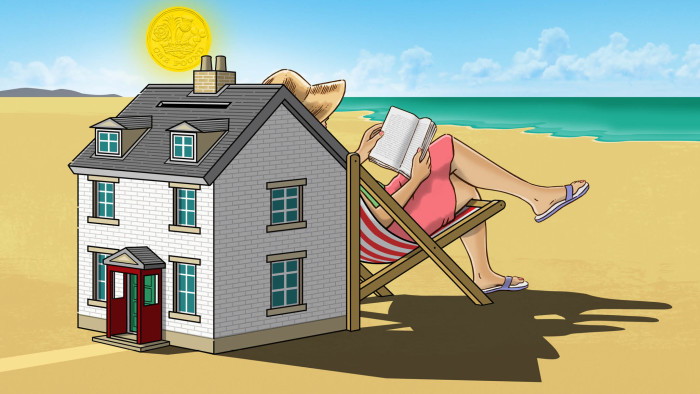
Jane and Roger Goodger built their house, complete with indoor swimming pool, in the 1970s. But, like many couples moving into the later stages of retirement, they decided to sell up and go elsewhere when their four-bedroom property in Wallington in the London borough of Sutton became a handful.
“We had a large garden and it was getting too much for Roger, who has Parkinson’s, so we decided we needed to move,” says Ms Goodger, 73. “We wanted to stay near to friends and family, but also to have a home that was easier to manage.”
Their motives are familiar, but the destination selected by the couple is part of a new wave of retirement homes that are coming on to the market, funded by big institutions and incorporating modern technology, high quality facilities and an emphasis on health and wellness.
The financial model for retirement homes is being reinvented as the sector strives to leave behind its past problems, including a litany of complaints about escalating service charges, high exit fees and falling property prices.
Legal & General, the insurer, is planning a swath of new developments — including the one selected by the Goodgers — while traditional retirement housing developers such as McCarthy & Stone, the UK’s biggest developer of retirement properties, have tackled contentious issues such as exit fees and problems with resale. Renting a retirement home is also becoming a more popular option among older residents wanting to free up capital for other pursuits such as travel.
Sebastian O’Kelly, director of the campaign group Better Retirement Housing, says the historic approach to retirement housing is broken — a model he characterises as “granny flats built by volume housebuilders, sold at a premium in blocks with limited parking, leases loaded with revenue streams and the freehold sold to speculators.”
Instead, retirement community operators are looking at the sector in a different way, he says. “They build sites. They manage them. They provide complex services — communal areas, restaurant, gym, maybe a pool, and care provision. This is the sector exciting serious investment from the likes of Goldman Sachs and Blackstone.”
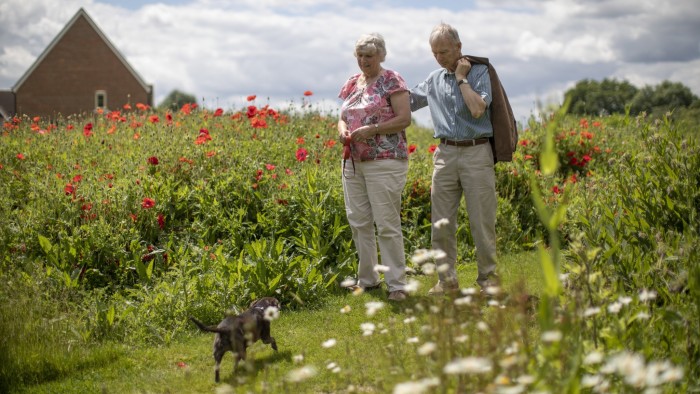
The retirement future
L&G is at the forefront of attempts to emulate countries such as the US, New Zealand and Australia, where around 6 per cent of over-65s live in so-called “retirement communities” — 10 times the proportion in the UK. With more than 3m over-60s wanting to downsize, L&G sees a £100bn investment opportunity in building 50 rural and edge-of-town retirement “villages” in the UK over the next five to 10 years.
Branded Inspired Villages, they will house 12,500 over-65s, and feature gyms, swimming pools, saunas, spas, cinemas, libraries, games rooms, GP surgeries and restaurants. L&G is also building 3,000 homes with Guild Living in town and city centres with similar facilities. The amenities for both types of L&G retirement home will also be open to local communities, in a bid to avoid “ghetto-isation”.
Ms Goodger, who moved to an L&G village in Faygate, West Sussex, in February, says: “We both use the gym and I do line dancing. The family comes to stay in a guest room in the main clubhouse. The residents organise all the events and if anyone is interested in an activity, classes get started.”
She adds that, while it is early days, she thinks the couple are better off cash wise than in their previous home and that the running costs were lower.
Other providers are also responding to the evolving demands of retirees. McCarthy & Stone, the retirement housebuilder, has built 51,000 properties across 1,100 developments since 1977. It has changed its contracts on new-build properties and now has an in-house resale operation, a move which it says has helped generate an average price increase on resale of 4 per cent.
“Running costs for a Retirement Living apartment are much lower than a customer’s previous home, typically saving circa £1,200 a year,” McCarthy & Stone says. Service charges start at £2,160 a year for a one-bed property, increasing to £9,072 for a two-bed property that provides 24-hour staffing and on-site care. It opened 18 “extra care” developments in 2018.
Prices for the L&G properties start at £211,000 for a 600 sq ft one-bedroom property in Warwickshire and the highest price is £981,000 for a 2,000 sq ft penthouse in the same development. So far there are eight Inspired Villages sites in Kent, Bedfordshire, Warwickshire, Cheshire, Devon, Hampshire and West Sussex. A further 10 are under way.
Adopting the label of “retirement communities”, these developments aim to take a proactive approach to the welfare of their residents. All the properties have tablet computers in the hallways that residents tap each morning to indicate they are up and well. If requested, the systems can also provide real-time 24-hour monitoring by checking if residents boil the kettle, run a bath or are sitting in one place for longer than usual.
So can a new buyer rely on these services being available in 5 or 10 years’ time, long after their purchase? L&G says its role as operator as well as developer of its sites ensures it has an interest in keeping residents happy. Tom Lord, chief operating officer of Inspired Villages, says: “As operators, we are committed to delivering the estate management and lifestyle services to our residents, both of which can be adjusted over time through consultation with residents, as their wants and needs might change.”
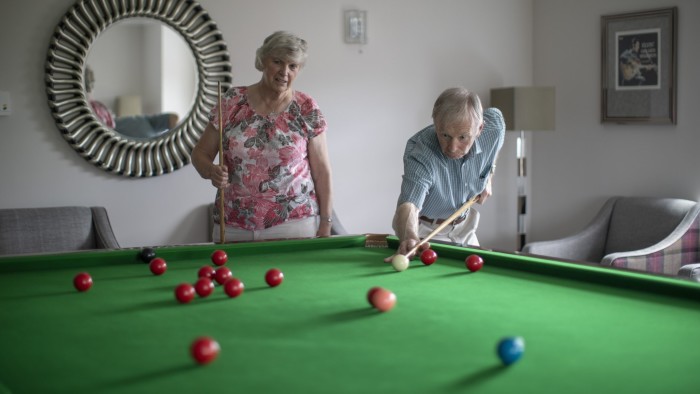
A chequered past
Complaints about resale prices, exit fees and service charges previously dogged the retirement housing sector. In 2017, the Elderly Accommodation Counsel, a housing and care needs charity, found that half of new-build retirement properties built between 1998 and 2012 were later sold at a loss.
Those built between 2005 and 2007 and resold between 2012 and 2014 suffered an average loss of 25 per cent, it found. Those built between 2000 and 2010 and resold between 2006 and 2016 declined in value by 17 per cent.
Having repeated this exercise in 2019, the EAC has yet to publish the new figures but its deputy chief executive, Adam Hillier, says the outlook for resale prices has improved. “Properties bought in 2013 and resold in 2018 showed an average rise of 10 per cent.”
EAC ascribes the improvement to better resale processes by the property managers and the use of specialist agents. “There has also been an improvement in the size of these properties and specialist agents understand the market they are selling to.”
Many of the biggest problems have been addressed by providers, but advisers say buyers still need to be vigilant on the charges that may be payable by buyers on resale, typically covered by the all-purpose phrase “event fees”. Which?, the consumer group, warns buyers that exit or event fees can vary from 2 per cent to 30 per cent of the resale price or market value. It advises buyers to “get clarity on these fees before signing any contract”.
When L&G residents sell up, the company charges what it calls “deferred management fees”. These vary at each scheme but typically rise 1-4 per cent a year, capped at 10-15 per cent depending upon the villages and the facilities provided.
McCarthy & Stone abolished exit fees some years ago but charges a 1 per cent sinking fund contribution on resale, ensuring that new owners are not landed with a big bill for repairs or major works when they move in. Its service charges also include a small fee that it says is “totally ringfenced and held in trust” to cover maintenance of the communal areas, both indoor and outdoor.
L&G, however, acknowledges that these charges are not always understood by the surviving relatives of retirement property owners, so plans to allow buyers to pay a fee upfront, ensuring there are no surprises years later.
“Paying upfront should be cheaper because it is based on the purchase price and not the sale price. While retirement properties have a reputation for falling in price we are determined that will not be the case with our properties,” says Mr Lord. One resident’s property had already risen in value by £75,000 after three years, he says.
Which? says companies should be signed up to industry codes of practice, which contain provisions about event fees and are designed to give residents greater protection. The Law Commission, meanwhile, is calling on the government to regulate event fees, and its report on the subject is currently being considered by ministers.
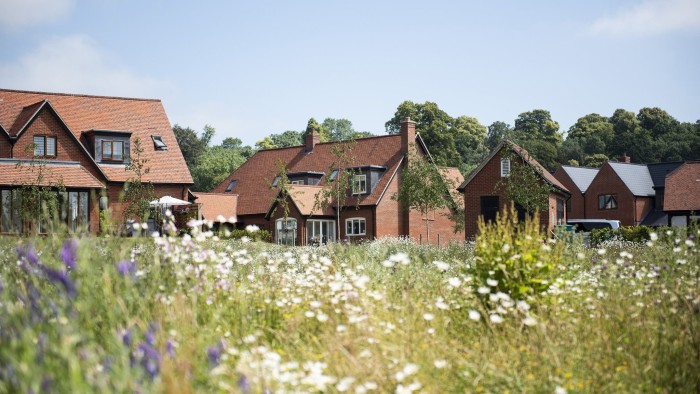
What does your money buy?
Most buyers pay cash for the 125-year leases on L&G’s Inspired Villages properties, but the company also offers lifetime mortgages, otherwise known as equity release, at any time during their life at the retirement properties. These mortgages allow buyers to roll up the interest costs until they sell the property or to pay interest only on the loans.
For the new Inspired Villages properties, annual service charges will cost £5,600 to £6,100, whatever their size. These will be paid quarterly and will be frozen for the first two years or increased in line with the consumer price index.
“We want the charges to be as predictable and as low as possible,” says Mr Lord. “These include the gyms, swimming pools, saunas and steam rooms, cinemas, buildings insurance, maintenance of the common facilities, internet and maintenance of extensive grounds and all the activities such as Zumba and aqua aerobics classes put on by the villages plus transportation.”
Guests of residents can also use all the facilities free of charge, and they can rent a two-bed apartment for £40 a night when they visit. Residents can also pay extra for laundry services, cleaning, handymen or care services.
Health monitoring is pitched as a strong benefit, with “fitness suites” in the L&G developments and a health assessment undertaken before residents move in. The company experimented with issuing Fitbit activity monitors to 30 of its early residents: they jointly took 15m steps over the period, an average of 5,500 steps a day.
“There was a fair amount of competition between them and we find that villages also compete with each other,” says Mr Lord.
It also offers gym machines programmed for each resident to work through a set exercise programme. “We have cardio walls, which are electronic versions of the fairground whack-a-mole games. In playing, the game people do squats and other exercises that, without the equipment, they might feel they cannot do,” says Mr Lord.
The trend to rent
Renting a retirement home is also a growing market. This month, Hamptons, the estate agent, reported that the number of over-50s renting properties had increased by 61 per cent since 2012.
Girlings Retirement Rentals, which has more than 2,500 properties in 600 UK retirement developments, has also seen an increase in the number of over-55s choosing to move into retirement developments after selling their homes.
Dr Rachael Docking, senior programme manager for homes at the Centre for Ageing Better, a charity, says: “Whether they’re renting in the traditional housing market or in bespoke retired developments, the most important thing is to make sure people in later life are supported. Private landlords, local authorities and housing associations all need to ensure their properties meet the needs of people with disabilities or who have lost mobility with age.”
Most of the properties are let on life-long assured tenancy agreements with its longest tenancy starting in 1991. If an assured tenancy is not available, tenants are usually offered three- to five-year assured shorthold tenancies. This is usually the case when the owner has a mortgage on the property that will not allow longer tenancies.
Jamie Turnbull, business director of Girlings, says: “We have seen a year-on-year increase in the number of people choosing to sell their family home to downsize and rent instead of buying. In January we had the largest number of lets ever.”
“Renting enables people to downsize to a more manageable sized property, release capital, save on bills and enjoy additional benefits such as access to ready-made community and services they may need when they are older.”
Girlings mostly represents investor landlords with large portfolios and some individual private landlords who have inherited a property. Monthly rent averages £794 for a standard property including service charges and ground rent, and £2,192 for a premium property.
It is a market that is attracting others. L&G plans to offer properties for rent in its high-end developments in the coming months. Since September 2018, McCarthy & Stone has been trialling rental and shared ownership and is planning to roll out rental option at more than 50 developments. “These trials have demonstrated that there is a real appetite for the rental proposition,” it says.
PegasusLife, established in 2012, offers its retirement properties for rental on an assured tenancy agreement or a rent-to-buy scheme at six of its developments, as well as for sale. Rent covers ground rent, service charges, building maintenance and insurance, parking, WiFi in the communal areas and a 24-hour emergency security system.
Freedom to travel
Keith and Teresa Davy have a taste for travel, having lived in 23 properties in the UK, Australia and New Zealand over their lifetime. They continued to travel when first retired, taking a motor home round the UK for eight months.
For the past year, though, they have been renting an apartment in Bournemouth with Girlings Retirement Rentals. Having owned a retirement flat in Torquay, they decided to sell their property and rent so that they could free up capital to allow them to travel more often. Since selling have been on holiday four times. When they visit London, they can rent a room in a similar retirement development for £25 a night through Girlings.
Their apartment is rented on an assured tenancy and they can stay there for life, something which appeals to Mr Davy. “At our age, we don’t want to worry that the landlord might decide to sell and give us a month’s notice to move out.”
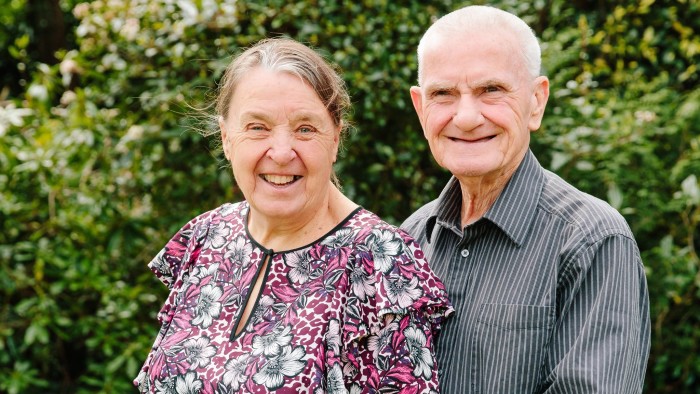

Comments